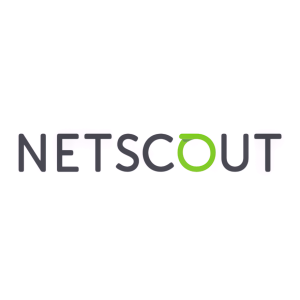Netscout Identifies I.T. Challenges Faced in Keeping Remote-work Employees Connected During Pandemic
NETSCOUT SYSTEMS, INC. (NASDAQ: NTCT) has released survey findings indicating a significant increase in the use of unified communications and collaboration (UC&C) solutions due to the rise of remote work during the pandemic. Key insights reveal that 97% of IT decision-makers see UC&C platforms as critical, while 85% plan to enhance their existing solutions. However, 73% report challenges, including issues related to cybersecurity and network visibility, with a noted increase in IT helpdesk calls and user frustration. The findings underscore the importance of network analytics in ensuring effective remote work.
- 97% of IT decision-makers consider UC&C platforms critical for remote work.
- 85% of respondents plan to upgrade their UC&C solutions.
- 73% of respondents face issues with UC&C usage, including cybersecurity and network visibility challenges.
- Increased IT helpdesk calls (63%) and user frustration (55%) due to UC&C problems reported.
WESTFORD, Mass.--(BUSINESS WIRE)--NETSCOUT SYSTEMS, INC., (NASDAQ: NTCT), a leading provider of service assurance, security, and business analytics, today announced findings from a survey it commissioned to understand the network infrastructure challenges associated with keeping employees connected in remote-work environments. The findings confirm that the use of unified communications and collaboration (UC&C) solutions has increased since the start of the pandemic, and that this increased use has created challenges for I.T. teams.
According to Gallup’s annual Work and Education Poll, one in four U.S. workers now work entirely from home with the number of remote-work telecommuting days doubling since last year. This dramatic increase places an added burden on I.T. departments to address complex UC&C solutions and manage the rise in I.T. helpdesk calls and tickets, especially given the added complexity of having multiple solutions without the visibility to identify issues.
Respondents to the NETSCOUT-commissioned survey fielded between Sept. 17 and Oct. 15, 2020, included 300 I.T. decision-makers from large enterprises with
-
97% of respondents stated that collaboration platforms, applications, and tools have become much more critical in the current work environment; -
In response to the increased use of UC&C platforms,
85% stated they were upgrading their solutions to provide a better workforce experience; -
Respondents stated that UC&C platforms have become much more critical to their business with
85% of those surveyed indicating usage has either increased or significantly increased; -
More than
73% stated that increased usage has been problematic, citing cybersecurity, privacy concerns, response time, network visibility, bandwidth issues, and ensuring users have the proper equipment as leading factors; -
Problematic UC&C platforms place an incremental burden on I.T. departments, with respondents citing an increase in calls to I.T. (
63% ), open tickets (59% ), user frustration (55% ) resulting from issues associated with UC&C platforms; -
When asked how many collaboration platforms and tools they supported,
29% stated 3-4,34% said 5-9,12% stated 10-15, while10% stated 16 or more.
“With so many people working from home, there has been an inevitable increase in the reliance on real-time services like UC&C,” stated Paul Barrett, CTO, Enterprise, NETSCOUT. “However, such services are highly sensitive to network problems such as packet loss and latency, and as a result, IT departments need to quickly understand the root cause of issues such as a saturated VPN concentrator or a problem that resides with a software-as-a-service provider. Hence the need for comprehensive monitoring solutions that give them the visibility they need to ensure a better remote-work experience.”
NETSCOUT also sponsored an IDC Technology Spotlight entitled, “UC&C and Network Analytics: A Critical Coupling,” which articulates why an enterprise’s skilled management of virtual communication and collaboration between workers, partners, and directly with customers is critical to its success. It cites IDC research that U.S. enterprises have invested
“UC&C solutions and network infrastructure combine to serve up the best possible end-user experience,” stated Richard Costello, Senior Research Analyst, IDC. “But, that’s no easy feat. Complete network visibility and control enabled by network analytics solutions facilitate the reliable real-time delivery of enhanced communications and collaboration in the onrushing digital era.”
About NETSCOUT
NETSCOUT SYSTEMS, INC. (NASDAQ: NTCT) helps assure digital business services against disruptions in availability, performance, and security. Our market and technology leadership stems from combining our patented smart data technology with smart analytics. We provide real-time, pervasive visibility, and insights customers need to accelerate, and secure their digital transformation. Our approach transforms the way organizations plan, deliver, integrate, test, and deploy services and applications. Our nGenius™ service assurance solutions provide real-time, contextual analysis of service, network, and application performance. Arbor Smart DDoS Protection by NETSCOUT products help protect against attacks that threaten availability, and advanced threats that infiltrate networks to steal critical business assets. To learn more about improving service, network, and application performance in physical or virtual data centers, or in the cloud, and how NETSCOUT’s performance and security solutions powered by service intelligence can help you move forward with confidence, visit www.netscout.com or follow @NETSCOUT on Twitter, Facebook, or LinkedIn.
©2020 NETSCOUT SYSTEMS, INC. All rights reserved. NETSCOUT, the NETSCOUT logo, Guardians of the Connected World, Adaptive Service Intelligence, Arbor, ATLAS, Cyber Threat Horizon, InfiniStream, nGenius, and nGeniusONE are registered trademarks or trademarks of NETSCOUT SYSTEMS, INC., and/or its subsidiaries and/or affiliates in the USA and/or other countries. Third-party trademarks mentioned are the property of their respective owners.







